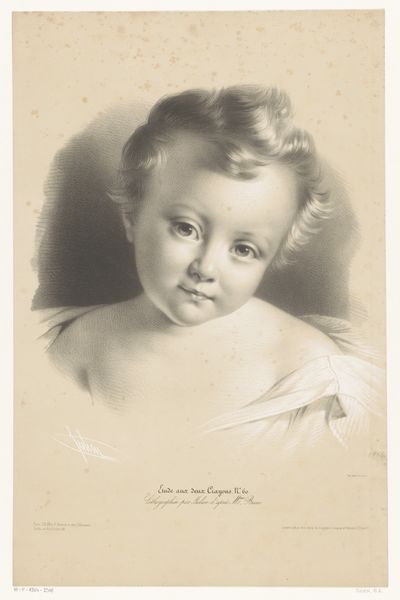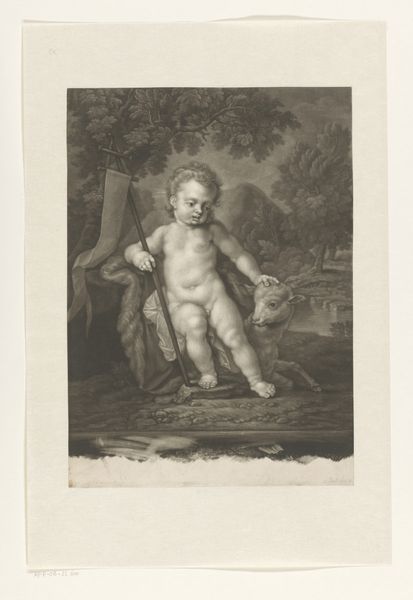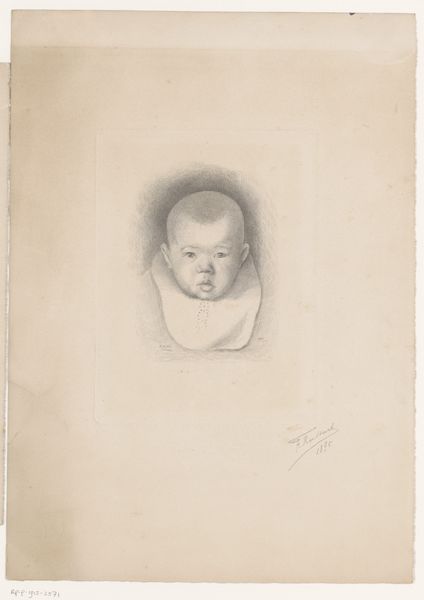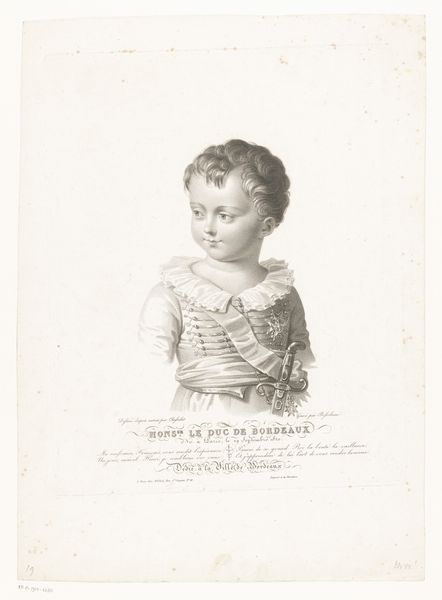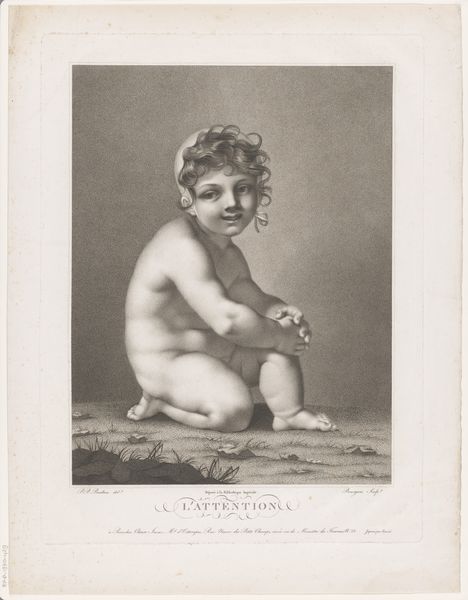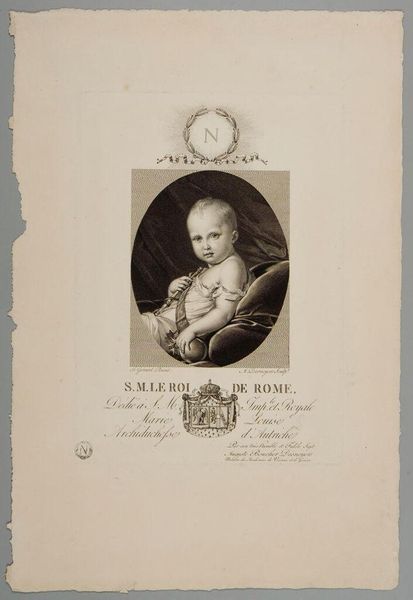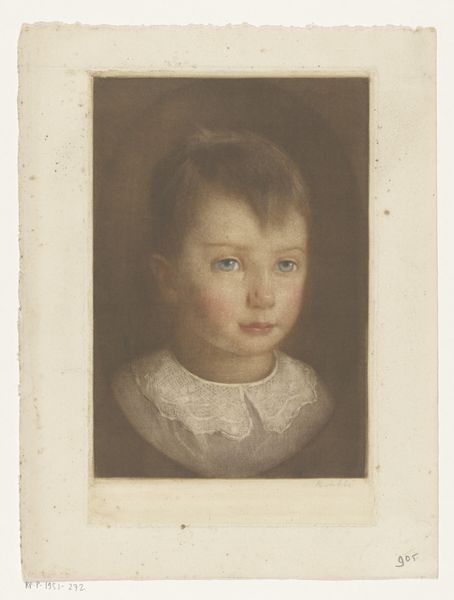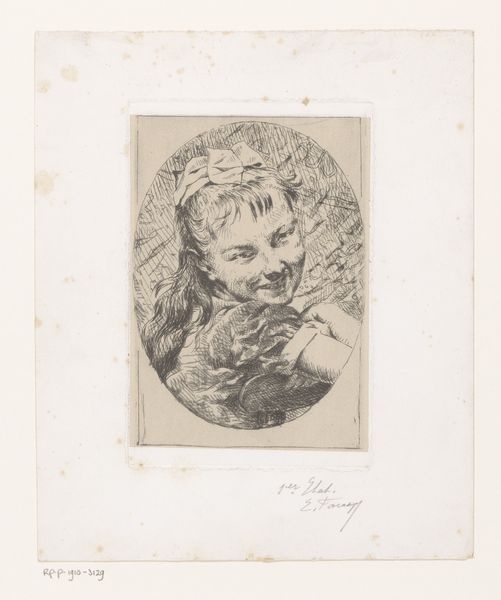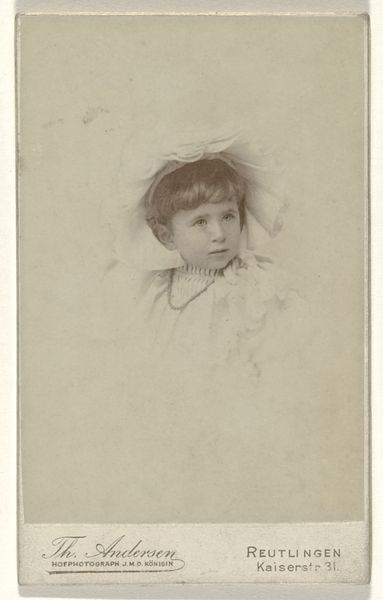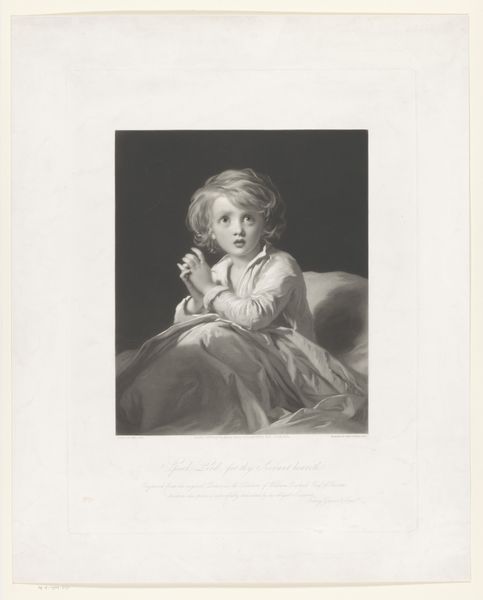
Dimensions: height 612 mm, width 434 mm
Copyright: Rijks Museum: Open Domain
Curator: Before us hangs Émile Lassalle’s 1854 oil on canvas, titled "Jonge Christus slaat zijn ogen ten hemel", housed here at the Rijksmuseum. A very…intense piece. Editor: Yes, initially I am struck by its scale; the sheer vulnerability of the subject so boldly rendered. The pose is unsettling, almost saccharine. Curator: Let's deconstruct that “vulnerability.” Consider how Lassalle positions the figure – the upward gaze, the cherubic features – all contributing to a calculated sense of divine innocence and perhaps also, longing. It evokes the tradition of Romantic idealism. Editor: True, but it feels performative. The way the soft flesh is rendered, the subtle yet suggestive draping of fabric – it pulls me away from any "divine innocence". It makes me think of the labour involved. All of that preparation, all those layers, leading to something designed to elicit this specific response. The making itself becomes a spectacle. Curator: And is that not a characteristic element of academic art? Lassalle demonstrates rigorous control of line and tone, crafting form with incredible illusionism. We are asked to perceive the transcendent, and the illusion is critical to that process. Editor: Precisely. The means justify the ends; exploiting labour, time and materiality to present something "holy". It's almost cynical, when framed against its context. Curator: Cynical, perhaps, but undeniably effective. Lassalle's command of composition pulls us into a dialogue, both aesthetically and ideologically. Editor: Indeed, this portrait encourages discourse surrounding faith, labour and representation itself, offering new insights each time we look. Curator: Ultimately, viewing the interplay between form and illusion leads to complex questioning and reveals new layers in the canvas. Editor: Precisely – a journey of both substance and suggestion. Thank you.
Comments
No comments
Be the first to comment and join the conversation on the ultimate creative platform.
